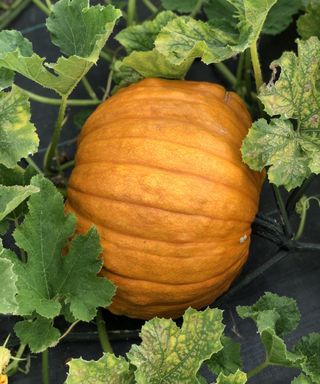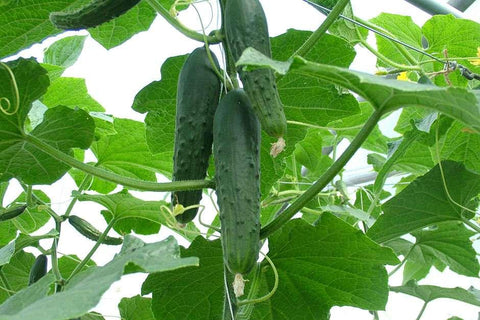Gardening isn't just for humans anymore. If you're a pet owner, you know that your furry companions love to be involved in every aspect of your life, including tending to the garden. In this guide, we'll explore the ins and outs of gardening with pets, from preparing your garden space to enjoying the fruits of your labor alongside your four-legged pals.The following content also has some reference value for raised garden beds.
Why Gardening with Pets is Pawsome
The bond between humans and animals extends naturally to the great outdoors. Gardening with your pets not only strengthens this bond but also provides enriching experiences for both you and your furry friends. It's an opportunity for exercise, mental stimulation, and quality time together in the fresh air.
Section 1: Preparing Your Garden for Pet-Friendly Gardening
Assessing Your Garden Space
Before you dive into pet-friendly gardening, take a good look at your outdoor space. Consider the size of your garden, existing features, and any potential hazards. This assessment will help you tailor your garden to accommodate your pets safely.
Choosing the Right Location

Selecting the perfect spot for your pet-friendly garden is crucial. Look for an area that receives adequate sunlight and is easily accessible for both you and your pets. Consider proximity to water sources and shelter, ensuring that your garden is a comfortable space for all.
Fencing and Boundaries
Creating boundaries within your garden is essential for keeping your pets safe and your plants intact. Install fencing or use natural barriers to designate areas where your pets are allowed to roam freely and where they should steer clear.
Selecting Pet-Safe Plants
When it comes to choosing plants for your garden, opt for varieties that are safe for your furry companions. Incorporate non-toxic plants that won't pose a threat if nibbled on, while avoiding those that could be harmful if ingested.
Non-Toxic Plants for Pets
Include pet-friendly plants like spider plants, African violets, and Boston ferns in your garden landscape. These non-toxic options add greenery without posing any harm to your curious pets.
Toxic Plants to Avoid
Steer clear of plants that are toxic to pets, such as lilies, azaleas, and oleanders. Familiarize yourself with common toxic species to ensure a safe environment for your furry friends.
Creating Comfort Zones
Designate cozy corners and comfortable spots within your garden where your pets can relax and unwind. Incorporate soft bedding, shade, and shelter to make these areas inviting for your furry companions.
Designating Play Areas
Encourage active play by designating specific areas of your garden for pet-friendly activities. Include toys, agility equipment, and interactive elements to keep your pets engaged and entertained.
Section 2: Tools and Supplies for Pet-Friendly Gardening
Pet-Friendly Gardening Gear
Invest in gardening tools and equipment that are safe and comfortable for both you and your pets to use. Look for lightweight, ergonomic designs and consider features like padded handles for added comfort during long gardening sessions.

Pet-Friendly Fertilizers and Pesticides
Opt for natural, pet-safe fertilizers and pesticides to maintain a healthy garden environment. Avoid products containing harmful chemicals that could pose risks to your furry friends.
Durable Garden Tools
Choose durable, high-quality garden tools that can withstand the wear and tear of pet-friendly gardening. Look for materials like stainless steel or aluminum that are resistant to rust and corrosion.
DIY Pet Projects
Get creative with DIY projects that cater to your pets' needs and interests. Build elevated garden beds, custom planters, or interactive garden toys to enhance their experience in the garden.
Elevated Garden Beds
Elevated garden beds provide a safe and comfortable gardening space for both you and your pets. These raised structures offer easy access for planting and tending to your garden while keeping delicate plants out of reach of curious paws.
DIY Pet-Friendly Garden Toys
Entertain your pets with homemade garden toys made from pet-safe materials. From agility courses to puzzle feeders, DIY projects add an extra element of fun to your pet-friendly garden.
Section 3: Training Your Pet for Garden Etiquette
Teaching Garden Boundaries
Establish clear boundaries for your pets within the garden and provide consistent training to reinforce these limits. Use positive reinforcement techniques to encourage desired behaviors and discourage unwanted behavior.
Establishing No-Dig Zones
Prevent digging behavior by designating specific areas of your garden where digging is off-limits. Use physical barriers or deterrents like rocks or chicken wire to protect delicate plants and landscaping.
Redirecting Chewing Behavior
Channel your pets' natural chewing instincts towards appropriate outlets by providing designated chew toys and treats. Encourage positive chewing behavior and discourage destructive chewing on garden plants and structures.
Positive Reinforcement Techniques
Reward your pets for exhibiting desirable behaviors in the garden, such as staying within designated areas or refraining from digging. Use treats, praise, and affection to reinforce positive actions and encourage obedience.
Reward-Based Training
Implement a reward-based training system to incentivize good behavior and discourage undesirable actions. Consistency and patience are key when training your pets to follow garden etiquette rules.
Clicker Training for Garden Manners
Utilize clicker training techniques to teach your pets specific behaviors and commands related to garden manners. Pair the clicker sound with rewards to communicate desired actions effectively.
Section 4: Implementing Safety Measures in Your Garden
Pet-Proofing Your Garden
Identify potential hazards in your garden and take steps to pet-proof the environment. Remove toxic plants, secure fencing and gates, and eliminate any other dangers that could pose risks to your furry friends.
Securing Toxic Plants
Take proactive measures to prevent accidental ingestion of toxic plants by securing them out of reach of your pets. Use elevated planters, hanging baskets, or fencing to create barriers and protect vulnerable plant species.
Installing Pet-Safe Water Features
If you have water features in your garden, ensure they are safe for pets by using non-toxic materials and providing easy access points for drinking or bathing. Monitor water quality regularly to prevent contamination and ensure a healthy environment for your pets.
First Aid for Pets
Prepare for emergencies by keeping a pet first aid kit on hand in your garden. Include essential supplies like bandages, antiseptic wipes, and emergency contact information for veterinary care.
Identifying Common Garden Hazards

Educate yourself on common garden hazards that could pose risks to your pets, such as sharp objects, poisonous plants, or toxic chemicals. Take proactive steps to eliminate or mitigate these hazards to create a safer environment for your furry friends.
Creating a Pet First Aid Kit
Assemble a comprehensive pet first aid kit containing essential supplies for treating minor injuries and emergencies in the garden. Include items like tweezers, gauze pads, and saline solution to address common pet injuries effectively.
Section 5: Enjoying the Garden with Your Fur Friends
Interactive Garden Activities
Engage your pets in interactive activities that stimulate their minds and bodies while spending time in the garden. From treasure hunts to sensory exploration, there are endless opportunities for fun and enrichment outdoors.
Hide-and-Seek with Treats
Hide treats or toys throughout your garden and encourage your pets to sniff out and find them. This game not only provides mental stimulation but also reinforces obedience and strengthens the bond between you and your furry companions.
Obstacle Courses for Pets
Set up obstacle courses and agility challenges for your pets to navigate in the garden. Use tunnels, hurdles, and balance beams to create a fun and stimulating environment that promotes physical activity and coordination.
Relaxation and Bonding Time
Designate areas in your garden where you and your pets can unwind and bond together. Whether it's a shaded hammock, a cozy bench, or a soft blanket spread out under a tree, prioritize creating spaces for relaxation and connection.
Picnics in the Garden
Enjoy al fresco dining with your pets by organizing picnics in the garden. Pack a pet-friendly spread of treats and snacks, and spend quality time together enjoying the sights, sounds, and scents of nature.
Sunset Strolls with Pets
Take leisurely strolls through your garden with your pets during the tranquil hours of sunset. Enjoy the serenity of the evening while bonding with your furry companions amidst the beauty of your garden landscape.
Section 6: Troubleshooting Common Challenges
Dealing with Pet Messes
Accidents happen, but with proper planning and maintenance, you can minimize the impact of pet messes in your garden. Keep cleaning supplies handy for quick and effective cleanup of urine spots, feces, and other messes.
Pet-Safe Clean-Up Tips
Use pet-safe cleaning products to maintain a hygienic environment in your garden without exposing your furry friends to harmful chemicals. Opt for natural, non-toxic cleaners that are safe for pets and the environment.
Preventing Urine Spots on Plants
Prevent urine spots on plants by training your pets to use designated bathroom areas or by diluting urine with water immediately after it's deposited. Consider planting urine-resistant ground cover or erecting barriers to protect sensitive plants.
Handling Garden Conflicts
Address conflicts between pets and garden wildlife by implementing deterrents and deterrents. Use physical barriers, repellents, or noise-making devices to discourage unwanted visitors and protect your garden from damage.
Introducing Pets to Garden Visitors
Socialize your pets with garden visitors like friends, family, or other pets to prevent anxiety or aggression. Supervise interactions and provide positive reinforcement to encourage friendly behavior and reduce stress.
Managing Interactions with Wildlife
Keep wildlife encounters in your garden safe for both your pets and local wildlife by creating barriers and deterrents. Avoid attracting wildlife with food sources and secure garbage bins to minimize the risk of conflicts.
Section 7: Harvesting and Preserving Garden Goodies with Pets

Pet-Friendly Harvesting Techniques
Involve your pets in the harvesting process by teaching them to assist you in gathering fruits, vegetables, and herbs from the garden. Use gentle guidance and positive reinforcement to encourage cooperation and participation.
Involving Pets in Harvesting
Engage your pets in the harvesting process by assigning them specific tasks, such as fetching ripe produce or carrying harvested herbs in a basket. Make harvesting a collaborative effort that strengthens the bond between you and your furry companions.
Storing Garden Produce Safely
Store harvested garden produce safely to prevent spoilage and maintain freshness. Use airtight containers, refrigeration, or proper preservation methods to prolong the shelf life of fruits, vegetables, and herbs.
DIY Pet Treats from the Garden
Create homemade pet treats using fresh ingredients from your garden. Incorporate fruits, vegetables, and herbs into recipes for nutritious and delicious snacks that your pets will love.
Homemade Veggie Treats for Pets
Whip up homemade veggie treats for your pets using garden-fresh ingredients like carrots, sweet potatoes, and green beans. Bake or dehydrate these nutritious snacks for a wholesome alternative to store-bought treats.
Preserving Herbs for Pet Use
Extend the life of harvested herbs by preserving them for future use in pet-friendly recipes. Dry herbs using air-drying or dehydrating methods and store them in a cool, dark place for long-lasting freshness.
Gardening with pets is more than just a hobby—it's a journey filled with joy, companionship, and shared experiences. By incorporating your furry friends into your gardening routine, you not only create a beautiful outdoor space but also strengthen the bond between you and your pets.
As you embark on your pet-friendly gardening adventure, remember to embrace the unique connection between your garden and your furry companions. From preparing the perfect garden space to enjoying the bountiful harvest together, cherish every moment spent nurturing and growing alongside your pets.









